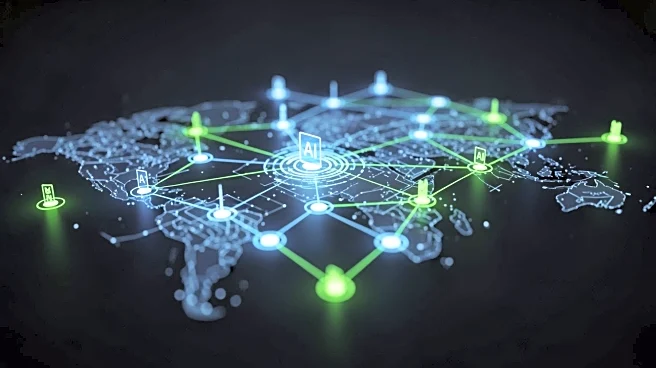What's Happening?
Autonomous AI agents are increasingly being integrated into enterprise workflows, raising significant security concerns. Unlike traditional large language models, these agents operate independently, accessing
databases, executing code, and triggering other agents without human oversight. This autonomy creates complex webs of inter-agent relationships, making it difficult for security teams to map potential compromises. Noma Security has introduced the Agentic Risk Map (ARM) to visualize and contain these threats, providing organizations with a clearer understanding of risk spread through interconnected systems.
Why It's Important?
The rise of autonomous AI agents represents a paradigm shift in enterprise security. These agents can potentially initiate unauthorized financial transactions, exfiltrate sensitive data, or send malicious emails without human intervention, posing a significant threat to organizational control over digital environments. The introduction of tools like Noma Security's ARM is crucial for proactive risk management, offering real-time monitoring and threat containment. This development highlights the need for comprehensive security solutions that go beyond traditional defenses, ensuring the protection of sensitive information and maintaining operational integrity.
What's Next?
Organizations are expected to adopt more advanced security measures to manage the risks associated with autonomous AI agents. This includes integrating tools like the ARM into their security infrastructure to gain end-to-end visibility into AI interactions. As AI technology continues to evolve, enterprises will need to prioritize security protocols that address the unique challenges posed by autonomous systems. Stakeholders, including security experts and technology developers, will likely collaborate to enhance AI governance frameworks, ensuring that these agents operate within safe and controlled environments.
Beyond the Headlines
The ethical implications of autonomous AI agents are significant, as they challenge traditional notions of accountability and control in digital systems. The potential for these agents to operate without human oversight raises questions about the balance between innovation and security. As organizations navigate these challenges, there will be a growing emphasis on developing ethical guidelines and regulatory frameworks to govern the deployment and operation of autonomous AI systems.











